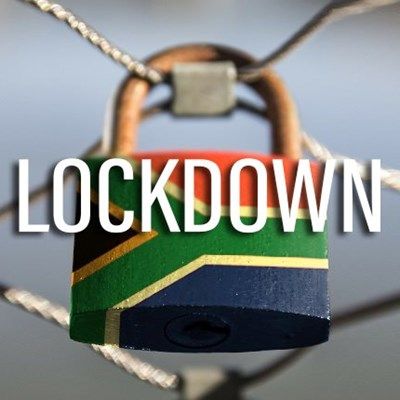The lock down – what it may be costing SA – and how to measure the losses

The lock down – what it may be costing SA – and how to measure the losses

By Brian Kantor, Head, Research Institute Investec Wealth and Investment
“What the lock downs will have cost their economies before economic life returns to something like normal will be measured with some degree of accuracy after the event. It will be the difference between all that might have been produced or earned (measured by gross domestic product (GDP) had economies not been shut down to a lesser or greater degree and what has been produced and earned in the process despite the lock downs.
It is possible to forecast potential GDP pre the crisis by extrapolating the underlying trend in outputs and incomes before the crisis. A more complicated econometric model could attempt the same forecasts. The difference between this potential GDP and the GDP delivered over the two or three years, post the crisis, will give us an accurate enough estimate of the costs of the lock down.
We have estimated a GDP loss ratio for SA under lock down. We have made a broad-brush estimate of how much of potential GDP will be produced each quarter in SA. It is assumed in Q1 2020 that SA GDP will run at 90% of its potential, then in Q2, when the knock down impact will be at its most severe, we judge that the GDP will then run at 75% of what have been delivered without the crisis. Thereafter each quarter, the loss of output ratio reduces by 5% per quarter. That is GDP will rise to 80% of potential GDP to be produced in Q3, 90% in Q4, 95% in Q1 2021 and then back to 100% in Q2 2021.
This would mean a V shaped recovery bringing the economy back to its potential by mid-2021. This might be an optimistic scenario. But even so the loss in GDP each quarter on these assumptions could amount to a very damaging losses of over R1 trillion by Q2 2021.
It would be a loss equal to about 25% of GDP delivered in 2019. And may be compared with the extra R500b rand the government plans to spend on economic relief. Whatever the more precise measure of GDP over the next few years there are undoubtedly very large opportunity costs in the form of sacrificed output and incomes that South Africans will be bearing.
The economic damage of the lock downs will be painful and will be measured as foregone GDP with a good degree of accuracy. These sacrifices of income and output will not be shared equally by all South Africans. Many will lose jobs that will be difficult to replace. Others will lose their jobs and the businesses that self- employed them. Some businesses will survive better than others in the new world of business after Corona virus. Many will see the value of the pensions and retirement plans, their hard earned savings, painfully reduced.
Businesses to survive will need a reserve of working capital to start up again. The banking system, with assistance from the government and its central bank, should be able to provide some effective support for those with viable businesses, but without the means to start them up again. It would only be fair for the government that has so damaged the value of their enterprises, to help the banks do so- by creating money for the banks to deploy in the form of extra bank credit. And overspending to mitigate the damage caused would be better than underspending- especially if the interest rate charge to future taxpayers can be limited by money creation. At times like these traditional parsimony is not called for.
Would it be unfair to point out that those in SA who are employed by the government at all levels, will lose neither incomes nor the pension benefits the SA taxpayer has guaranteed them on retirement. Their willingness to accept a wage and salary freeze might seem a proper form of reciprocation.
The actual GDP numbers over the next two years will be closely watched and used to update our GDP loss ratio in order to gauge the shape of the recovery. It will hopefully be a V shaped recovery as we have estimated – it could be a less helpful more prolonged U shaped recovery, with an extended bottom to the U should the economy struggle to revive its spirits and confidence. The economic recovery might worse even take a double u (W) course. That is a brief recovery followed by a further decline and then only later a recovery.
The economic growth rates as they unfold will not mean what they usually do. And therefore should be treated with great care over the next few years. GDP growth rates are most often presented as annual percentage growth from quarter to quarter, when the GDP has been adjusted for seasonal influences and converted to an annual equivalent That is growth from one quarter in seasonally adjusted GDP to the next quarter is then raised to the power of 4 to provide an annualized growth rate. This is the growth rate that attracts headlines.
Two consecutive negative growth rates measured this way are regarded as indicating a ‘technical recession’. The implication of this annual equivalent growth rate is that quarterly growth is expected to continue at that pace for the next year. Clearly under the influence of lock downs growth, so measured, is likely to become even more variable than it usually is.
This will be especially true of Q2 2020 when the impact of the lock down will be at its most severe- perhaps reducing growth in GDP to a truly shocking negative rate of minus 50% p.a. or thereabouts.
Estimating growth on this quarter to quarter basis over the next few years will be a very poor guide to the underlying growth trends. Following our estimates of the loss ratio and GDP, as an example, would show a very sharp contraction in Q2 2020, to be followed by positive growth of 40% p.a. in Q3 and Q4, 10% in Q4 and then as much as 50% again in Q2 2021. The recession will seemingly have been avoided and the economy will soon be recording boom time growth rates. This would present a highly misleading account of what has been going on with the economy.
If GDP is compared to the same quarter a year before we will get a much smoother series of growth rates. It is likely to show negative growth throughout 2020, (down by as much as -20% p.a in Q2) with strongly positive growth of 30% resuming in Q2 2021 when measured off the highly depressed base of Q2 2020, when the lock down was at its most severe.
The better way to calculate the impact of the lock down in terms of growth rates would be to calculate the simple percentage change in GDP from quarter to quarter (not seasonally adjusted or annualized) as the impact of the lock down unfolds and gradually, we should hope, dissipates. The worst quarters measured this way will be Q2 and Q3 2020 after which quarter to quarter growth in percentage terms will become positive. See the figure below that turns our estimates of quarterly GDP in current prices over the next few years into the alternative measures of growth rates.
Estimated Quarterly Growth rates between 2020 and 2022 under alternative conventions.

Source: SA Reserve Bank and Investec Wealth and Investment
The upshot is that growth rates will not be able to tell what has happened to an economy when subject to a severe supply side shock – that is temporary in nature. Measuring in absolute terms , in money of the day GDP sacrificed each quarter, as we have attempted to do as a forecast, will tell the full tale of economic destruction under way. We would be pleased if the bill for economic was measured as less than one trillion rand.
Monetary and fiscal policy should be fully engaged in avoiding such disappointments. Lower interest rates, combined with a degree of money creation, used to fund significantly more government spending, are urgently called for to revive the SA economy”


.svg)











